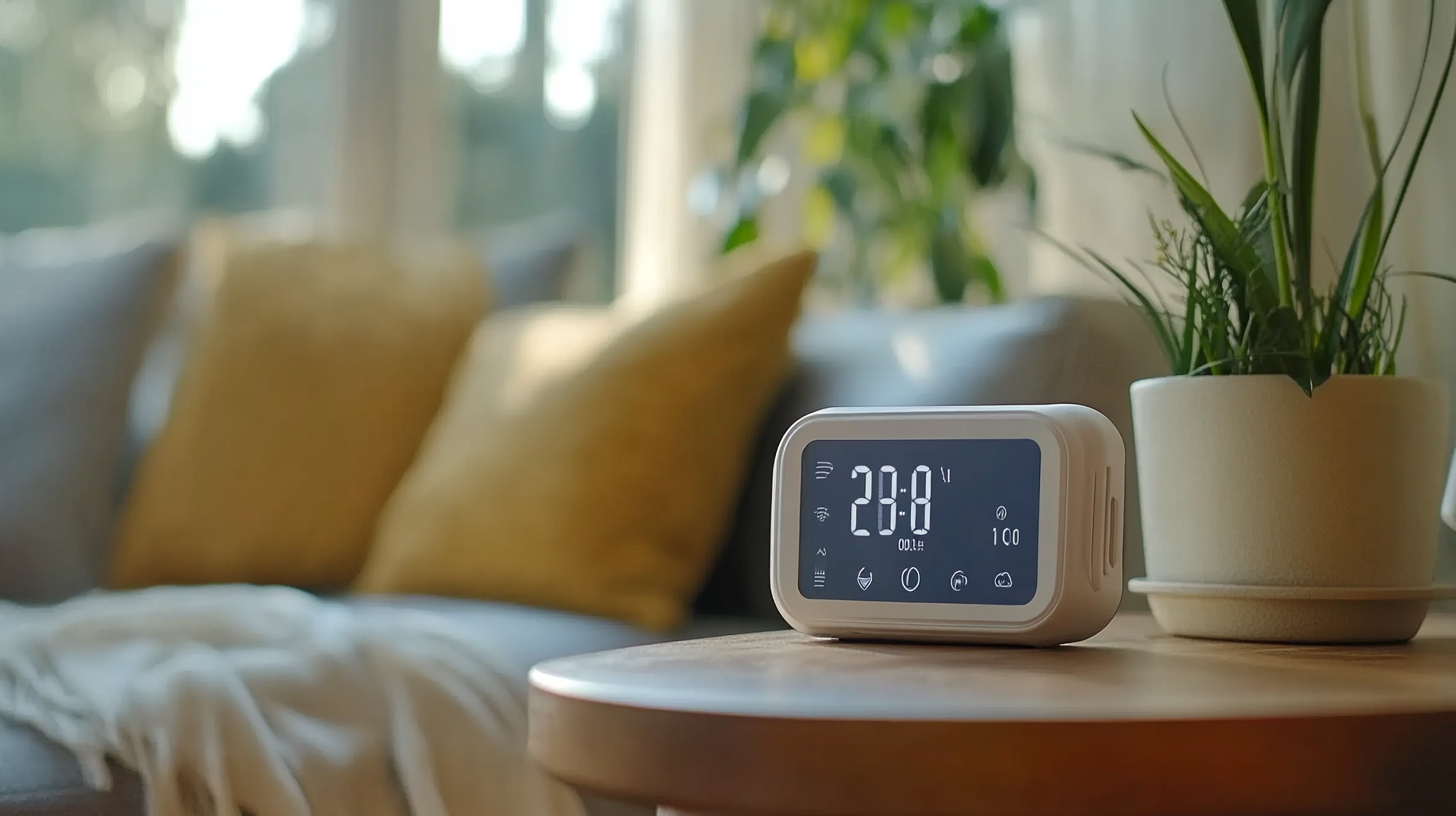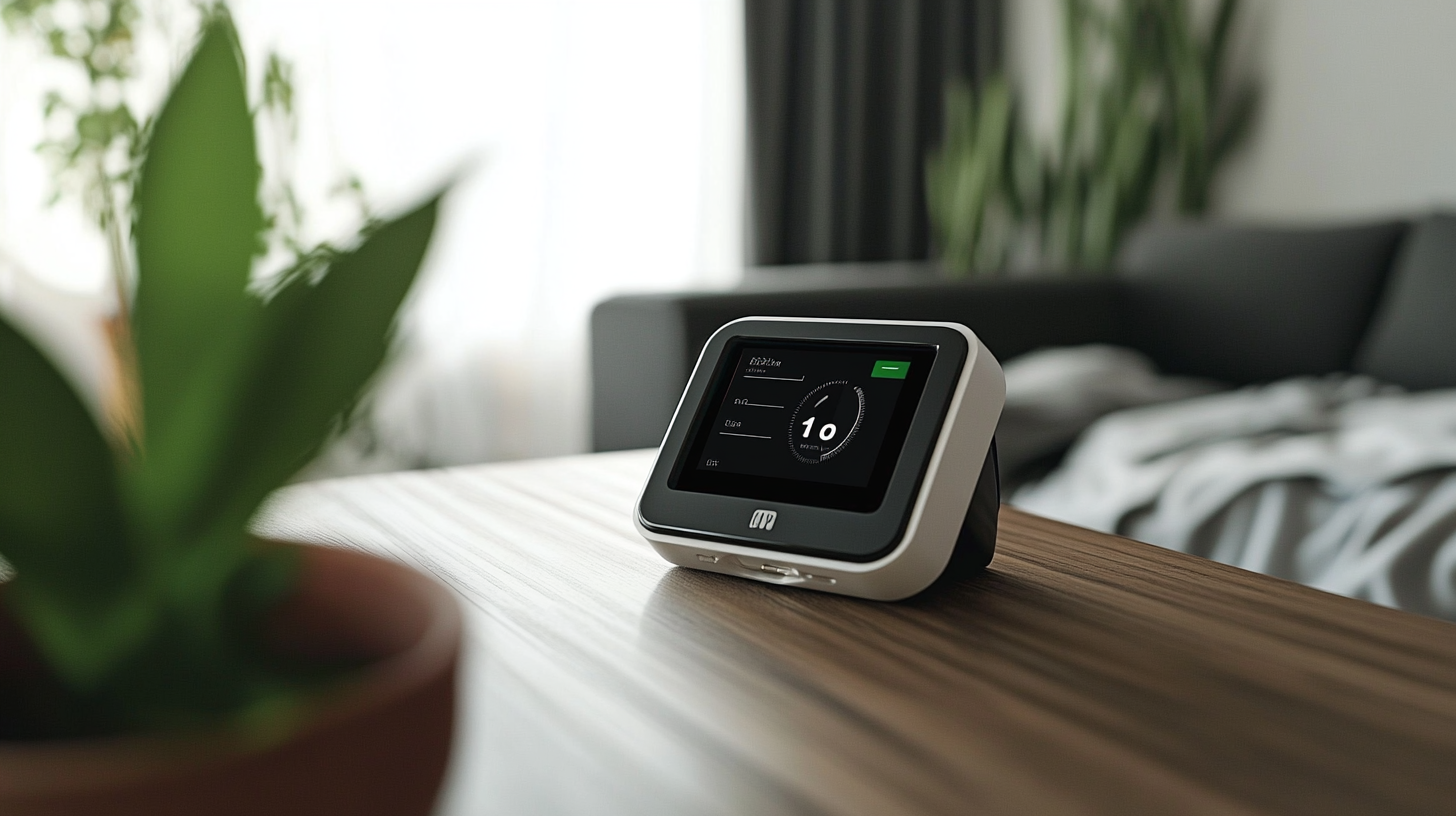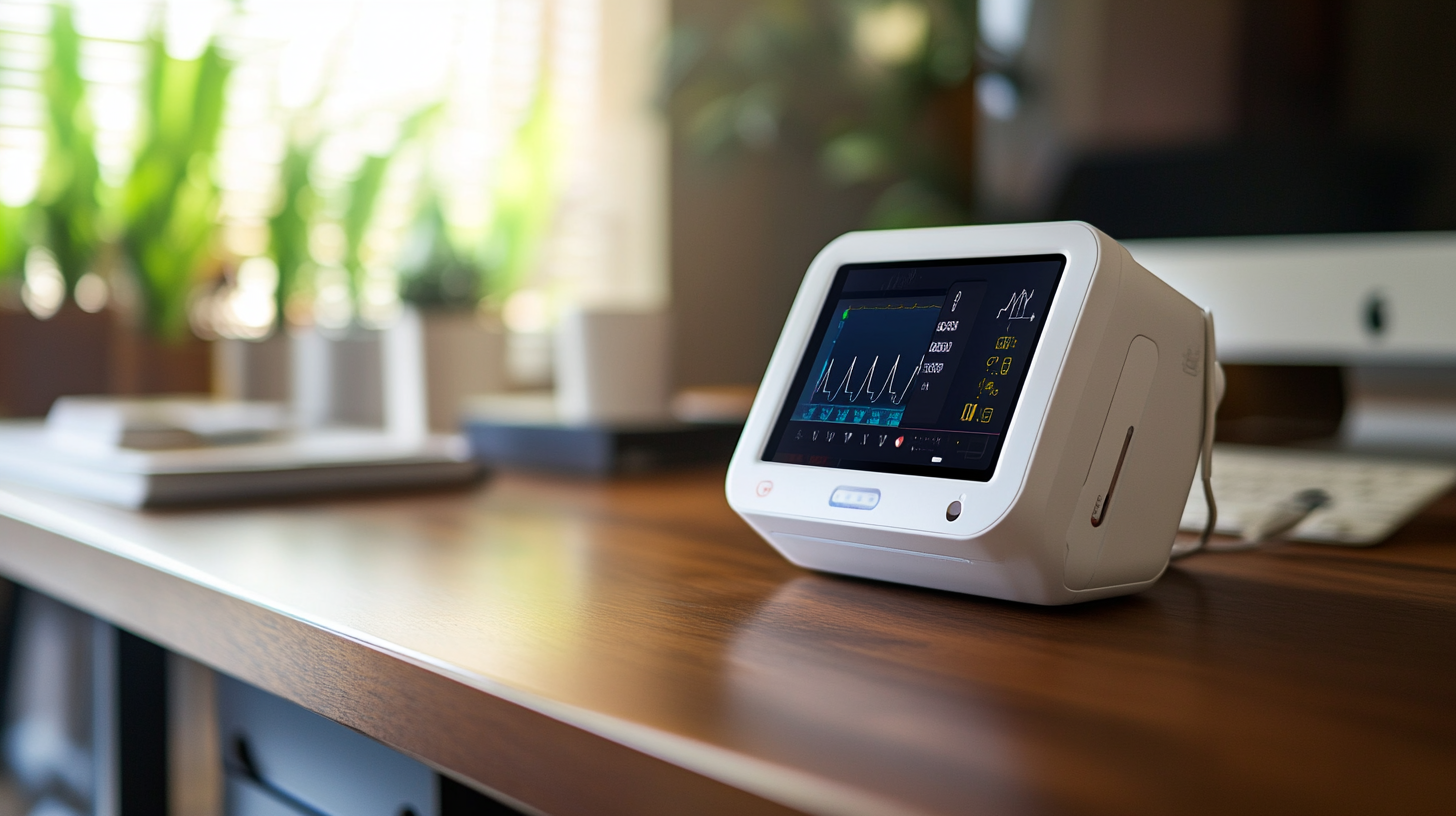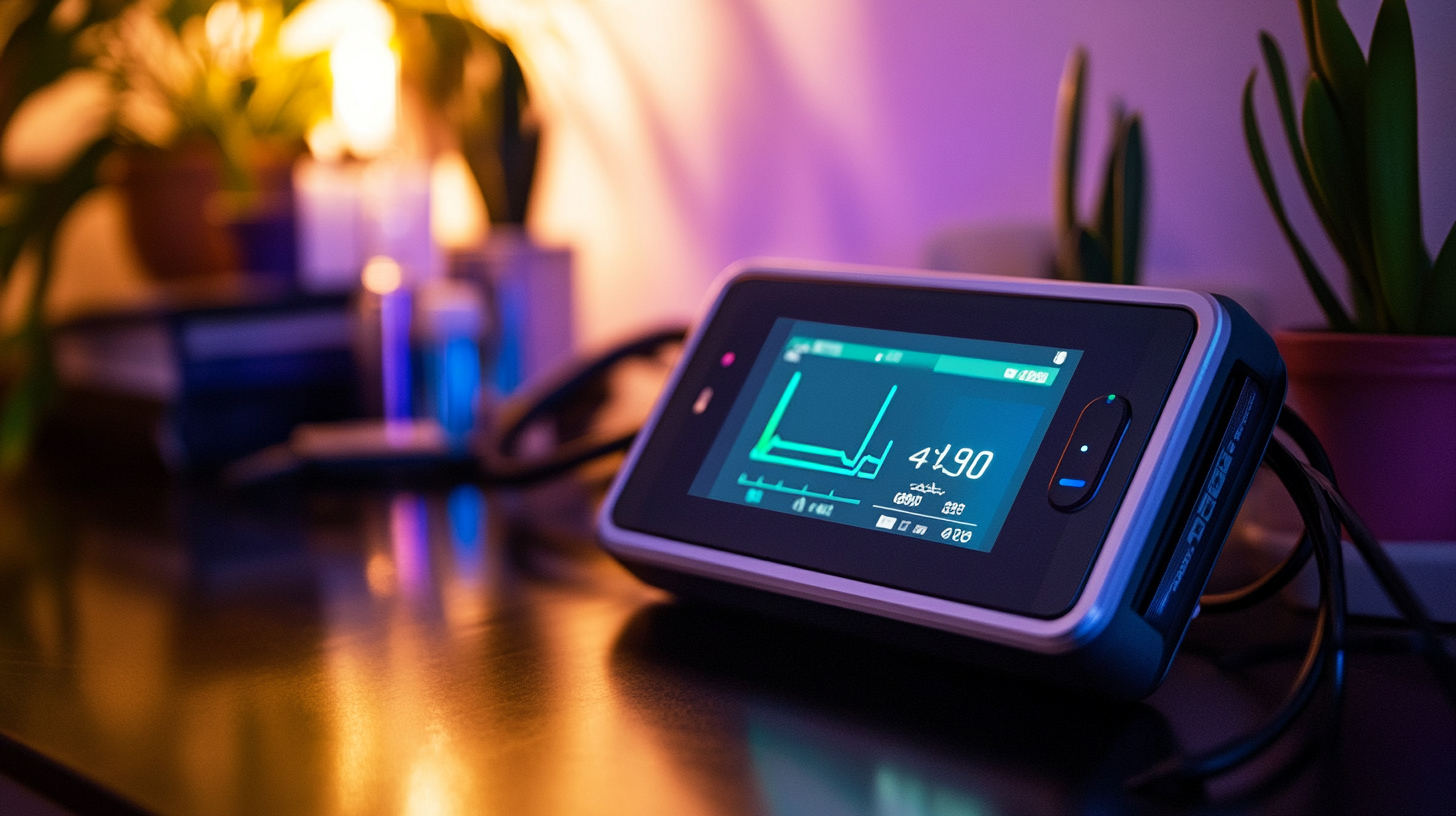Revolutionizing Healthcare with Home Pulse Oximeters and Their Impact on Global Patient Monitoring
In recent years, the integration of technology into healthcare has taken on a transformative role, particularly with the rise of the Home Pulse Oximeter. This innovative device allows patients to monitor their blood oxygen levels conveniently from home, promoting proactive healthcare management. According to a report by Grand View Research, the global pulse oximeter market is expected to reach USD 2.56 billion by 2027, reflecting a compound annual growth rate (CAGR) of 10.5% from 2020. This surge is propelled by an increasing demand for remote patient monitoring solutions, especially in the wake of health crises such as the COVID-19 pandemic, which highlighted the critical need for continuous and accessible healthcare services.
The impact of Home Pulse Oximeters extends beyond individual health monitoring; they play a vital role in enhancing global patient care, particularly for those suffering from chronic respiratory conditions like COPD and asthma. Research from the World Health Organization indicates that respiratory diseases account for 3 million deaths annually, emphasizing the need for effective management tools. With Home Pulse Oximeters, patients can gain valuable insight into their health metrics, enabling timely interventions and reducing the burden on healthcare systems. As we delve into the implications of this technology, it becomes clear that Home Pulse Oximeters are not just enhancing patient monitoring but are indeed revolutionizing healthcare delivery on a global scale.

The Growing Demand for Home Pulse Oximeters in Patient-Centered Care
The demand for home pulse oximeters is surging as the focus on patient-centered care intensifies. These portable devices, capable of estimating blood oxygen saturation levels, have gained popularity not just among patients recovering from COVID-19 but also among those managing chronic respiratory conditions. The ability to monitor one’s oxygen levels from the comfort of home empowers patients, giving them a sense of control over their health. This shift towards at-home monitoring reinforces the need for accessible healthcare solutions as more individuals seek to manage their wellness proactively. As advancements in technology continue to enhance the functionality and accuracy of medical devices, the potential for home pulse oximeters grows significantly. They serve as an integral part of a broader trend towards remote patient monitoring, which is becoming essential in today’s fast-paced healthcare environment. The convenience of self-monitoring allows patients to avoid unnecessary trips to healthcare facilities while providing valuable data for healthcare providers to make informed decisions about treatment plans. Moreover, this rising trend aligns with the increasing interest in home-based primary care. With an aging population and a healthcare system under strain, home pulse oximeters represent a practical solution to meet patient needs. They contribute to a more holistic, patient-focused approach, thereby transforming traditional healthcare delivery into one that is more adaptive and responsive to individual circumstances. As awareness of these devices grows, so will their role in enhancing quality of care and improving health outcomes on a global scale.

Key Innovations in Pulse Oximeter Technology Enhancing Patient Monitoring
The advent of pulse oximeter technology has significantly transformed patient monitoring, particularly in the home healthcare sector. According to a report by Grand View Research, the global pulse oximeters market is expected to reach $2.4 billion by 2027, growing at a compound annual growth rate (CAGR) of 10.2%. This surge is largely driven by the increasing prevalence of respiratory diseases, such as COPD and asthma, highlighting the critical need for continuous and remote monitoring of patients' oxygen saturation levels.
Innovations in pulse oximeter technology have further enhanced patient care capabilities. Recent advancements include compact designs, Bluetooth connectivity, and improved algorithms that provide more accurate readings even in challenging conditions, such as low perfusion states. A study published in the Journal of Clinical Monitoring and Computing noted that modern pulse oximeters now offer an accuracy rate of over 95%, a significant improvement over older models. This level of precision enables healthcare providers to make informed decisions remotely, ensuring timely interventions that can be life-saving.
Moreover, the integration of artificial intelligence (AI) with pulse oximeter devices is paving the way for predictive analytics in healthcare. This technology can analyze real-time data to flag potential emergency situations before they escalate. A report from MarketsandMarkets indicates that the AI in healthcare market is expected to grow from $6.7 billion in 2020 to $67.4 billion by 2027, underscoring the potential of smart pulse oximeters in delivering proactive patient monitoring. As these innovations continue to evolve, they are set to play a pivotal role in enhancing quality of care and optimizing health outcomes globally.

Statistical Impact of Home Monitoring on Chronic Disease Management
The integration of home pulse oximeters into healthcare systems has revolutionized how chronic diseases are monitored and managed. With an increasing prevalence of conditions such as heart failure and respiratory illnesses, remote patient monitoring has become essential. According to the latest statistics, chronic diseases affect nearly 60% of adults, significantly burdening healthcare resources. By enabling patients to track their oxygen levels at home, healthcare providers can better manage these conditions, reducing the need for frequent hospital visits and allowing for timely interventions.
In the realm of chronic care management, the importance of telehealth continues to grow, particularly among older adults who often face barriers to accessing traditional healthcare settings. Recent findings from a scientific statement by the American Heart Association highlight the disparities in health equity faced by aging populations with heart failure. Home monitoring devices, like pulse oximeters, can bridge these gaps by providing critical data directly to healthcare professionals, allowing them to tailor treatments based on real-time information. This approach not only enhances patient engagement but also promotes proactive care, which is vital in managing chronic diseases effectively.
As healthcare evolves, the role of technology, particularly telehealth solutions, is becoming increasingly prominent. A focus on home monitoring not only addresses the immediate needs of patients but also contributes to broader public health goals. By combining the insights gained from home pulse oximeters with comprehensive data on chronic disease management, we can ultimately improve health outcomes and foster a more equitable healthcare system for all.

Global Market Trends: The Rise of Home Health Monitoring Solutions
The global healthcare landscape is undergoing a significant transformation with the rise of home health monitoring solutions, particularly fueled by advancements in technology such as home pulse oximeters. The remote patient monitoring market, valued at approximately US$24.39 billion in 2023, is poised for remarkable growth, with projections indicating a compound annual growth rate (CAGR) of 12.7%. This growth trajectory is expected to elevate the market value to US$27.72 billion by 2024 and potentially double it to US$56.94 billion in the following years.
As more patients seek convenient and effective ways to manage their health from the comfort of their homes, the demand for reliable home health monitoring devices has surged. Pulse oximeters, which measure oxygen saturation levels, have become essential tools for individuals with chronic respiratory conditions and other health concerns. This trend reflects a broader shift toward proactive and preventive healthcare, enabling patients to engage more actively in their health management while reducing the strain on healthcare facilities.
Moreover, the emergence of robust digital health platforms and data analytics is enhancing the effectiveness of home-based monitoring solutions. By connecting patients with healthcare professionals in real time, these technologies facilitate timely interventions and personalized care strategies. As healthcare providers continue to embrace these innovations, the integration of home health monitoring into traditional care models is likely to redefine patient outcomes and overall healthcare delivery, underpinning a new era of personalized health management.
Patient Outcomes: How Home Pulse Oximeters Change Chronic Care Management
The integration of home pulse oximeters into chronic care management is revolutionizing patient outcomes, especially for those with respiratory conditions like COPD and asthma. As the smart pulse oximeters market is projected to reach significant growth due to advancements in healthcare technology, these devices play a pivotal role in remote patient monitoring (RPM). With a growing emphasis on home-based care, clinicians can now leverage these tools to continuously monitor their patients' oxygen levels, leading to timely interventions and improved health outcomes.
Recent studies highlight the effectiveness of predictive algorithms in home monitoring for chronic diseases, particularly in managing exacerbations of conditions like interstitial lung disease. By providing real-time data, home pulse oximeters facilitate a proactive approach to care. Patients are empowered with actionable insights, enabling them to engage more actively in their health management. This shift towards a more connected healthcare experience is enhanced by the rising demand for RPM, which has demonstrated its ability to transform chronic care management.
In the wake of the COVID-19 pandemic, RPM has surged in significance, enabling healthcare providers to offer continuous care while minimizing hospital visits. Reports indicate that RPM programs have evolved to encompass a range of chronic care use cases, ensuring daily tracking of patient health from the comfort of their homes. As wearables become increasingly prevalent in chronic disease management, the synergy between home pulse oximeters and RPM provides a robust framework for reducing hospitalizations and enhancing overall healthcare delivery.


